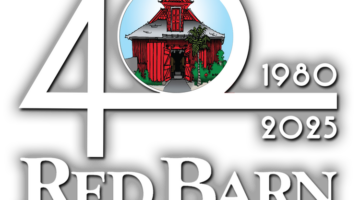By Dr. Virginia Burgohy Irving
Some local people and some local-minded individuals living in various cities in Florida never forgot the moral ecology that the Fredrick Douglass School and its teachers, families, Black churches, and other community entities provided for the Key West community. Together they provided a system of beliefs and behaviors that shaped local culture and were consistently applied in the everyday lives of people of color who grew up in Key West. These beliefs were based on core questions that mattered, what was most important, and the kind of human being needed to create a world of inclusivity, fairness, and respect.
Some of what emerged that mattered most was the dignity of each human being in the community, the family, the school and its teachers, and the church.
The locals referred to above comprise the Frederick Douglass School Black Educators Memorial Project, Inc. Since 2010, its members have worked to showcase the history of how a people could come together, unknowingly and unwittingly, without a deliberate plan of action, and for over 100 years create a moral ecology that sustained successfully a community of people, Bahamian, African Americans, Cuban, and Chinese, with diverse backgrounds. The ethos, the spirit of the “place,” nurtured and motivated these people to aspire for more. Many became scientists, educators, medical professionals, judges, and lawyers.
From 2011 – 2016, District VI’s commissioner Clayton Lopez promised the group help in securing the Frederick Douglass School Band Room to be used as a museum. The building sat “waiting” and the dream of its use for a museum to house the history of the indigenous people grew smaller until there emerged in 2019 a “need” for more access to health care. Through various “negotiations and maneuvers” led by Commissioner Lopez, the building is being considered for use by an out-of-town health provider.
This is business as usual, as gentrification over the last 50 years in “Bahama Village” has been not just a waiting game for properties to be seized. It has been a very conscious and deliberate attempt to eliminate the indigenous people, and to minimize their participation in the life of the island in rewarding ways.
Another move to minimalize the participation of the indigenous people is in the current use space at the Frederick Douglass Gym for art in public places, public art displayed that does not engender the spirit, ethos, and the cultural contributions of the indigenous people who lived in Bahama Village for over 150+ years. What it does do is say to these people that “who you are and what you were, where you came from” is of no importance on this island that your ancestors helped to shape and sustain..
Public art should take its cues from the community space that it will inhabit. If nothing more, at most, the public art for the Frederick Douglass Gym/Community Center should tell the story of the people of the community it served historically. At least, it should be a gift to honor the indigenous people whose properties in Bahama Village are no longer theirs and whose history has been used to give it the “flavor” it uses to attract hundreds of thousands, if not millions, to the island each year.
When will all the people matter in Key West? Moving forward, when will the next 50+ years of planning for Key West’s development include, too, the well-being of the indigenous people? When will the island become what its slogans maintain – “one Human Family,” and “Onward, Upward, Forward, Together”? When will the politics of Key West regain its moral sense of inclusivity, diversity, and unity, for ALL?
Dr Irving has served for 6 years as the facilitator for the Frederick Douglass School Black Educators Memorial Project, Inc. She has held teaching positions in several Florida counties, including Monroe, served as executive director for a private, non-profit early education school, worked in the Education Department at St. Petersburg College, Florida, and served, too, as an early childhood consultant. She is a native Key Wester, a graduate of Frederick Douglass School, 1959. Though she lives in St. Petersburg, she still calls Key West her home and continues to be involved in its politics.
[livemarket market_name="KONK Life LiveMarket" limit=3 category=“” show_signup=0 show_more=0]


No Comment